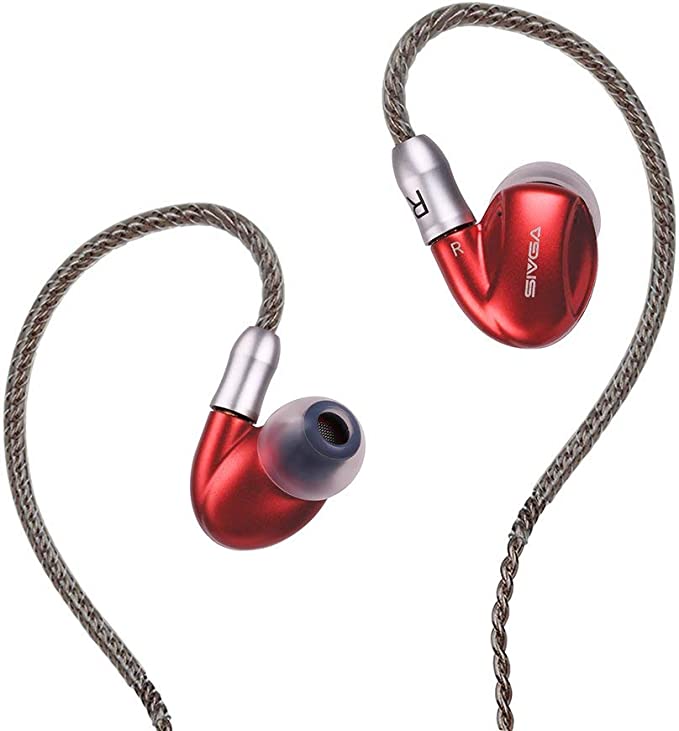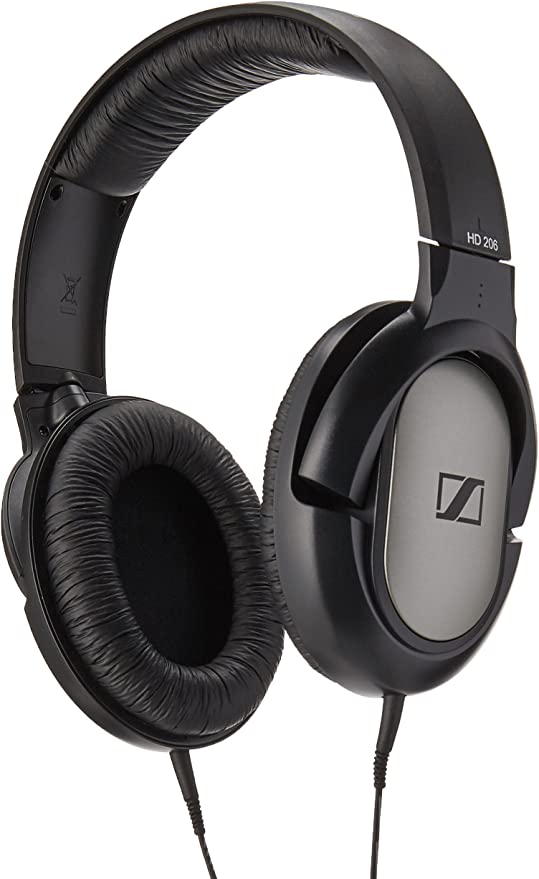There’s an almost primal human desire to experience sound in its purest, most unadulterated form. Whether it’s the resonant thrum of a bass guitar, the delicate shimmer of a cymbal, or the nuanced inflection in a beloved voice, we crave an auditory experience that transports us, that connects us directly to the heart of the music or a captivating narrative. In our pockets and on our desks, a universe of sound awaits, yet the final bridge to that immersive experience often lies in the intricate technology nestled within our ears. Today, we’re not just looking at a product; we’re using the SIVGA SM002 Professional High-Definition in-Ear Earbuds as our lens to peer into the fascinating world of audio engineering, exploring the science that aims to bring us closer to sonic truth. Our journey will be guided by the details SIVGA itself has shared about the SM002’s architecture, allowing us to understand its design philosophy from the inside out.

Act I: The Sonic Engine – Anatomy of a Triple-Driver Hybrid
Imagine a world-class orchestra. Each section—strings, brass, woodwinds, percussion—has its specialists, musicians who have mastered their particular range and timbre. Achieving a rich, full-spectrum sound from a tiny in-ear monitor presents a similar challenge for audio engineers: how do you faithfully reproduce the deep rumble of a bass drum and the ethereal whisper of a flute with equal precision using drivers small enough to fit comfortably in your ear? The SIVGA SM002 tackles this by employing a “hybrid” system, essentially a miniature acoustic ensemble, featuring one dynamic driver and two balanced armature drivers.
The Dynamic Foundation: The Rhythm & Bass Maestro
At the heart of the SM002’s low-end and midrange prowess is a 10mm dynamic driver. Think of a dynamic driver as the traditional workhorse of the audio world, a miniaturized version of the classic loudspeaker cone you’d find in a high-fidelity sound system. It operates on a beautifully simple principle: an electrical audio signal flows through a voice coil attached to a diaphragm, all within a magnetic field. This causes the diaphragm to vibrate, pushing air and creating sound waves. It’s the acoustic equivalent of a powerful, yet surprisingly agile, bassist and drummer laying down the foundational rhythm and robust heart of the music.
The diaphragm material is critical here. SIVGA utilizes a PEEK (Polyetheretherketone) film for this driver. From a materials science perspective, PEEK is a high-performance thermoplastic renowned for its exceptional stiffness-to-weight ratio, excellent damping characteristics, and resistance to flexing undesirably (known as “breakup”). In theory, a diaphragm made from such a material can move with piston-like precision, starting and stopping rapidly in response to the audio signal. This allows for the reproduction of complex basslines without muddiness and can contribute to a well-defined midrange. SIVGA describes the PEEK diaphragm’s contribution as yielding a “low frequency [that] is full and thick,” a “bright and soft mid-range,” “excellent ultra-low frequency” performance, and a “wide sound field.” This driver is engineered to deliver the visceral impact and warm body of the music.
The Balanced Armature Duo: Weaving Detail and Clarity
Complementing the dynamic driver are two balanced armature (BA) drivers. If the dynamic driver is the heart, think of the BAs as the nimble fingers and articulate voice of the ensemble. Balanced armatures work quite differently. Instead of a directly driven cone, a BA contains a tiny reed (the armature) balanced between two magnets, surrounded by a coil. When the audio signal energizes the coil, the armature vibrates. This minute vibration is transferred, often via a tiny drive rod, to an extremely small, stiff diaphragm.
The key advantages of BA drivers are their diminutive size, remarkable efficiency, and their ability to reproduce higher frequencies with exceptional speed and precision. They excel at unraveling complex musical passages, revealing subtle nuances, textures, and the delicate decay of notes that might be masked by less agile drivers. In the SIVGA SM002, these two BA drivers are tasked with delivering “high resolution-introduction” and, as SIVGA puts it, to “show a lot of details.” They are the specialists for the upper midrange and treble, ensuring that a shimmering cymbal crash, a delicate vocal harmony, or the crisp attack of a guitar string are rendered with lifelike clarity.

Harmonic Convergence: The Magic of the Hybrid
So, why this “hybrid” marriage of one dynamic driver and two balanced armatures (a 1DD + 2BA configuration)? It’s a strategy of “acoustic delegation.” Engineers recognize that different driver technologies have inherent strengths. Dynamic drivers are generally lauded for their natural and impactful bass response. Balanced armatures, on the other hand, shine in their ability to deliver intricate detail and clarity, particularly in the mid and high frequencies.
By combining these types, the SIVGA SM002 aims to leverage the best of both worlds. A crossover network (though not explicitly detailed in the provided information, it’s a necessary component in multi-driver systems) intelligently directs specific frequency ranges to the drivers best suited to handle them. The dynamic driver can focus on its powerful low-frequency duties without being strained by high-frequency demands, while the BAs can articulate the upper registers without the burden of reproducing deep bass. The goal, as SIVGA states, is to achieve “triple frequency equalization,” ensuring a coherent and balanced sound signature across the entirety of its specified 20Hz to 20KHz frequency response. This allows for a richer, more detailed, and ultimately more engaging listening experience.
Act II: Sculpting Your Signature – The Art & Science of Customization
One of the most intriguing aspects of the SIVGA SM002, as detailed in its product information, is the degree of sonic customization it offers. This isn’t just about finding a comfortable fit; it’s about actively shaping the sound to match your personal preferences or even the genre of music you’re enjoying. This is primarily achieved through interchangeable “nozzles” and cables.
The Nozzle Nexus: Your Personal Acoustic Filters
The nozzle of an in-ear monitor is the final conduit through which sound travels from the drivers to your eardrum. It might seem like a simple piece of tubing, but its physical dimensions—length, diameter, internal shaping, and any acoustic damping materials used—can have a significant impact on the perceived frequency response. Think of it like changing the mouthpiece on a trumpet or saxophone, or using different mutes with a brass instrument; subtle changes can alter the timbre and character of the sound. The SM002 comes with three distinct sets of these acoustic filters:
- Silver (Bass Nozzle): SIVGA describes this nozzle as delivering “More slam, deeper sub-bass, bass is clear and punchy with a good extension.” Acoustically, this might be achieved through a slightly wider bore or specific internal damping that allows lower frequencies to propagate with more energy, or perhaps a design that creates a resonant peak in the bass region. It’s suggested for genres like Rock, R\&B, and Hip-Hop, where a robust and impactful low end is often desired.
- Gunmetal (Balanced Nozzle): This nozzle aims to “enhance sound permeability,” offering “crisp and bright treble, warmer and smoother mids, less aggressive sub-bass, and a wider sound field.” This suggests a design focused on a more neutral or even frequency response, allowing the inherent characteristics of the triple-driver system to shine through with minimal alteration. It’s recommended for Pop vocals, classical music, and light music, where balance and clarity across the spectrum are key.
- Black (Treble/Midrange Nozzle): The focus here is on “More crisp and brighter mids” and “Clear for clarity and responsiveness.” This could involve a narrower bore or specific acoustic design elements that gently accentuate the upper-midrange and treble frequencies, enhancing vocal presence or the bite of certain instruments. SIVGA suggests this for Human voice reproduction and Jazz.
This ability to swap nozzles empowers you to become an active participant in the tuning process, tailoring the SM002’s sound signature to your evolving tastes or a varied music library.
The Cable Connection: Conduits of Purity
The SIVGA SM002 features detachable cables using the popular MMCX (Micro-Miniature Coaxial) connector. This is a significant feature for several reasons:
- Durability and Longevity: Cables are often the first point of failure in earphones due to wear and tear. A detachable system means if a cable gets damaged, you can simply replace it without needing to discard the entire earphone.
- Upgradeability and Customization: The MMCX standard opens the door to a vast aftermarket of specialized cables, allowing enthusiasts to experiment with different materials and constructions that some believe can further refine the sound.
- Versatility: As provided with the SM002, you get two distinct cables for different purposes.
SIVGA includes two cables, each with specific materials and intended uses:
- The Audiophile’s Choice (Music Appreciation Cable): This cable is crafted from 6N Single Crystal Copper Plated Silver. Let’s break that down:
- “6N” refers to a purity level of 99.9999%. The idea is that higher purity copper has fewer impurities that could impede electrical signal flow.
- “Single Crystal Copper” (often referred to as OCC – Ohno Continuous Casting) means the copper is drawn in a way that results in very long individual copper crystals, drastically reducing the number of crystal grain boundaries. In theory, these boundaries can act as tiny points of resistance or reflection for the audio signal.
- “Plated Silver”: Silver is an even better electrical conductor than copper. Plating the copper with silver is intended to further enhance conductivity, particularly for higher frequencies which tend to travel along the surface of a conductor (a phenomenon known as the “skin effect”).
SIVGA claims this cable offers a “better tone” and is solely for music listening, implying a focus on maximum signal integrity for critical listening sessions.
- The Pragmatist’s Pick (Daily Use Cable with Microphone): This cable is made from High purity OFC (Oxygen-Free Copper) Core Cable and includes an in-line microphone and controls. OFC is a well-regarded standard in audio, significantly reducing oxygen content compared to standard copper to improve conductivity and reduce corrosion. While perhaps not as exotic as the single crystal silver-plated option, it’s a solid choice for good quality audio transmission for everyday use, with the added convenience of handling calls and controlling playback (“answer the phone and more operation”).
The inclusion of two such different cables underscores a design philosophy gericht op zowel compromisloze geluidskwaliteit als dagelijkse bruikbaarheid.
Act III: The Listener’s Embrace – Comfort, Isolation, and Practicality
The most sophisticated audio engine can be let down by a poor fit or intrusive external noise. The SIVGA SM002, according to its description, pays considerable attention to these crucial aspects of the listening experience.
The All-Important Seal: Ear Tips and Passive Isolation
For any in-ear monitor, achieving a proper acoustic seal between the ear tip and your ear canal is paramount. This seal does two critical things:
- Optimizes Bass Response: Low frequencies, in particular, require this sealed environment to be perceived with their full impact and depth. A poor seal can make even the best earphones sound thin and anemic.
- Provides Passive Noise Isolation: By physically blocking the ear canal, well-fitting ear tips significantly reduce the intrusion of ambient sound.
SIVGA provides a generous assortment of ear tips to help you find that perfect seal and comfort level:
- Silicone Ear Tips (S/M/L): The standard, offering a balance of comfort and durability for many users.
- Double Silicone Ear Tips (Double Flange): These tips have two flexible flanges that can create a deeper and often more secure seal for some ear shapes, potentially enhancing isolation further.
- Sponge Ear Tips (Red): Often made of memory foam, these tips compress for insertion and then expand to conform precisely to the unique contours of your ear canal. Many users find foam tips offer the highest degree of passive noise isolation and a very secure, comfortable fit.
It’s important to understand the “Noise-Canceling” feature mentioned in the SM002’s specifications. Given the design described, this refers to passive noise isolation. Unlike Active Noise Cancellation (ANC) systems that use microphones and electronics to actively counteract external sounds, passive isolation is achieved purely by the physical barrier the ear tips create. It’s a highly effective way to reduce steady-state noises and allow you to focus on your music at lower, safer volumes. SIVGA notes, “You can use different ear tips when you are in different places,” highlighting the adaptability this selection offers.
Designed for Life in Motion
Beyond a good seal, physical stability is key, especially if you plan to use your earphones during activities. The SM002 incorporates features aimed at a secure and durable fit:
- Flexible & Snug Fit Ear Hook: The cable near the earpiece is designed to loop over the top of your ear. This ear hook wire is described as “ear shape memorized and flexible,” allowing it to conform to different ear shapes and provide a secure fit that resists being dislodged during movement. This is particularly beneficial for “sports-and-exercise.”
- Non-slip and Sweat-proof Design: These attributes further enhance the suitability for active use, improving grip and ensuring the earphones can withstand the rigors of a workout, contributing to their service life.

Coda: The SIVGA Ethos – “Returning Original Sound to Ear”
SIVGA states its overarching philosophy is “returning original sound to ear.” This ambition, to deliver an authentic and faithful audio reproduction, appears to be the driving force behind the SM002’s design choices. From the sophisticated triple-driver hybrid engine aiming for full-spectrum accuracy, to the customizable nozzles allowing for personalized acoustic tuning, and the provision of high-quality cable options, each element seems carefully considered to bring the listener closer to the artist’s original intent. The product description also mentions that the “whole team has more than 10 year experiences in audio industry,” suggesting a foundation of accumulated knowledge and passion behind their creations.
Encore: Your Sound, Your Symphony
The SIVGA SM002 Professional High-Definition in-Ear Earbuds, as detailed through their specifications, offer a fascinating glimpse into the applied science of personal audio. They serve as a compelling example of how meticulous engineering—from driver selection and acoustic design to material science in cables and ergonomic considerations—can converge to create a rich, detailed, and highly customizable listening experience.
Understanding the “why” behind these features—why hybrid drivers, why PEEK diaphragms, why different nozzles can alter sound—empowers you as a listener. It transforms the act of choosing and using earphones from a passive consumption into an active exploration. The SM002, with its array of tuning options, effectively hands you a conductor’s baton, allowing you to shape your personal soundscape. While the provided product information notes the SM002 was “Currently unavailable” as of its listing (dated May 9, 2017), the technologies it embodies continue to evolve and excite.
The journey of audio discovery is a personal one, filled with the joy of hearing familiar tracks anew, as previously hidden details emerge. Whether it’s through the SIVGA SM002 or other fine audio instruments, the pursuit of that perfect, immersive sound is a beautiful testament to our enduring love affair with music and the intricate science that brings it to life.




